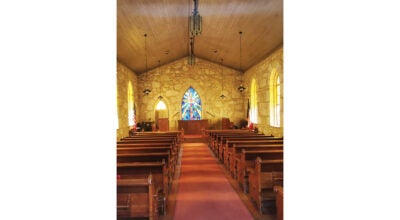Area colleges in good shape on student debt
Published 5:00 am Monday, October 6, 2003
Cuts in state education funding have colleges scrambling toavoid cutting programs or services and eying outstanding studentbalances as one way to recoup losses.
It is an option without much benefit for area communitycolleges, however.
“Truthfully, we don’t have a problem with that here,” said GradySmith, business manager at Southwest Mississippi CommunityCollege.
His opinion was mirrored by Michael Tanner, business manager atCopiah-Lincoln Community College.
Students owe SWMCC $54,497 and Co-Lin $318,000.
“That is extremely low,” Smith said. “Across the state we havethe lowest outstanding balance of the 15 community colleges.”
Tanner said $318,000 sounds far worse than it actually isbecause it has accumulated over a period of more than 30 years.
“When you compare $318,000 over 30 years to the $5 million ayear we collect for those services, it really isn’t a lot,” Tannersaid.
The outstanding balances result from a variety of fees andservices, including tuition, textbooks and dormitory and mealplans, among other student expenses.
State policy does not allow writeoffs or chargeoffs on astudent’s outstanding debt to a educational institution. Once adebt is made at a school, it stays until paid.
Some students who attended Co-Lin in the 1970s and ’80s stillhave outstanding balances.
“I’m sure there are still some outstanding balances back fromwhen I first started here (26 years ago),” Tanner said. “They’reharder to research, but as technology improves they are becomingmore accessible.”
Smith and Tanner said it would be very difficult to break downthe outstanding balances into categories because they are allcombined into students’ accounts and they would have to look upeach student’s account to separate the different fees.
Tanner has noticed an increase in outstanding student balancesover the past few years. He cites harder economic times for theincrease.
Non-traditional students, those who do not go directly from highschool to college, are more apt to meet their obligations, he said,because they are already employed and are seeking job changes toimprove their financial situation.
The difference in outstanding balances between the two collegesis a difference in ideology. Both schools accept state and federalguaranteed loans, but differ in accommodating students who arepaying for their own education.
At SWMCC, Smith said, class attendance is cut off atmid-semester if the student has not paid his fees in full. Studentsare only required to pay half their tuition before classes begin,but must meet the rest of their obligations by mid-semester or theycan not return to their classes.
“That’s the mechanism we use to ensure students meet theirobligations,” he said. “We have very, very few who don’t pay.”
Outstanding balances at SWMCC, therefore, result from studentswho failed to meet their obligations by mid-semester and neverreturned to the college.
Co-Lin’s outstanding balance is higher because they are moreflexible in helping students by establishing payment plans to meetthe student’s financial situation, such as allowing for monthlypayments that can stretch through the entire semester.
“We also try to tailor our plans one-on-one if necessary,”Tanner said. “We want to accommodate the students, but we alsocan’t mire ourselves down in outstanding balances. We’re caughtbetween helping the student and being fiscally responsible. We tryto exhaust all possible avenues.”
Before a student can return to either school, however, they mustpay any outstanding balance, in addition to the new tuition.
The school’s ability to collect outstanding balances, especiallyold debts, is limited by manpower.
Tanner’s business office is staffed by six people. Only twoemployees are tasked with collections in addition to their regularduties because of the daily workload.
“That’s probably the reason a lot of schools resort to usingoutside collection agencies,” Tanner said.
Co-Lin prefers to make their own collections because of thelimited control they have over the outside agency’s methods andtechniques, he said. They tried one in the 1980s, but received toomany complaints.
“We found ourselves in a situation where we didn’t like some ofthe methods they use,” he said. “Plus, 33 percent or more of thedebt is lost as the agency’s commission fee.”
Outstanding balances do have some effect on school operations,Tanner said. Each dollar lost to debt is a dollar that could beused to help fund the school, start new programs, or keep tuitionstable.
It is also an issue Tanner believes the state, suffering from astagnant economy and forced to cut education spending almostannually, will be looking more closely at in the future.
“I do feel at some point a government auditor will requireschools to do more. Down the road, some agency may require we domore by hiring an agency or improving our in-housecollections.”





